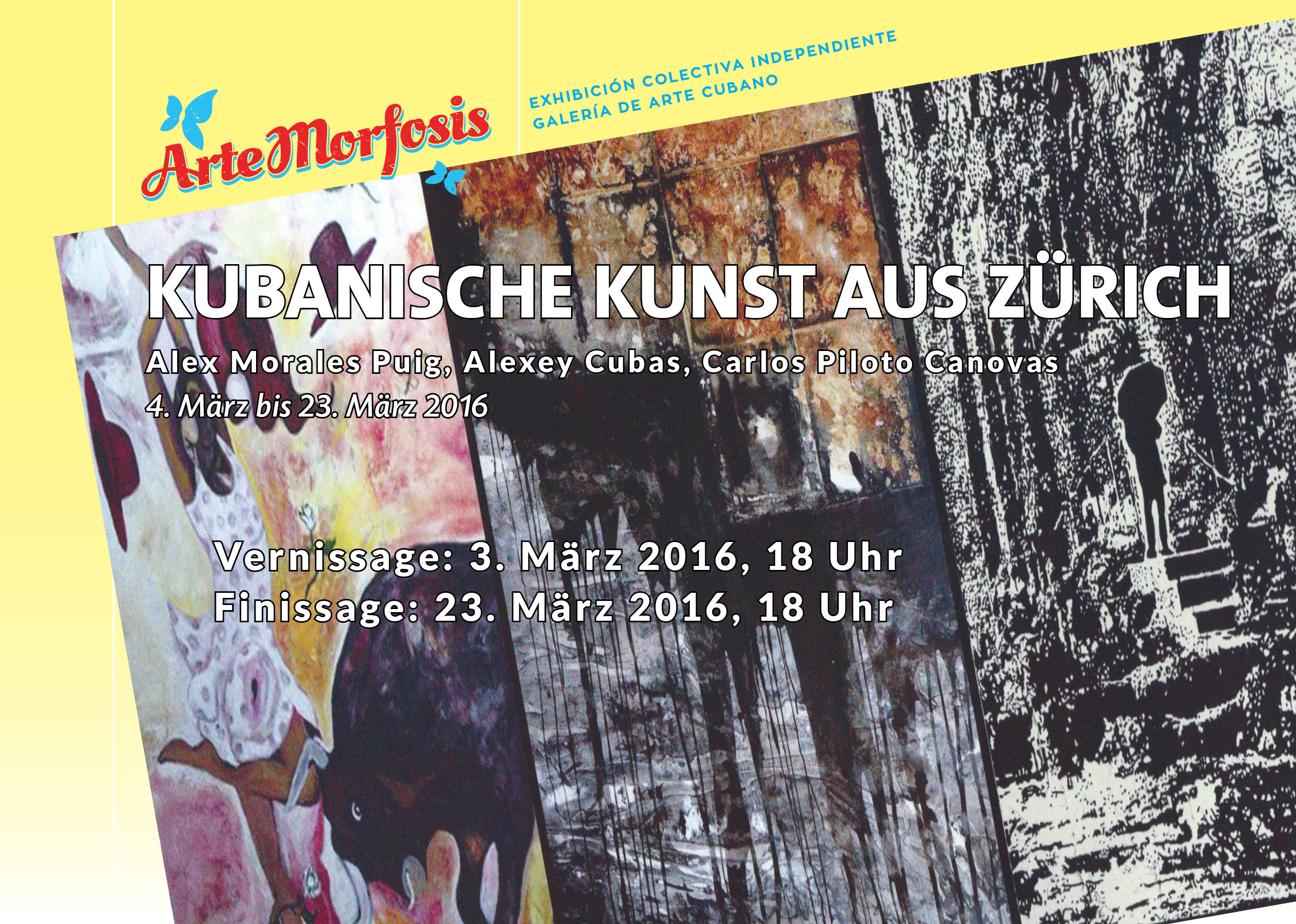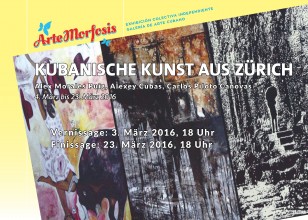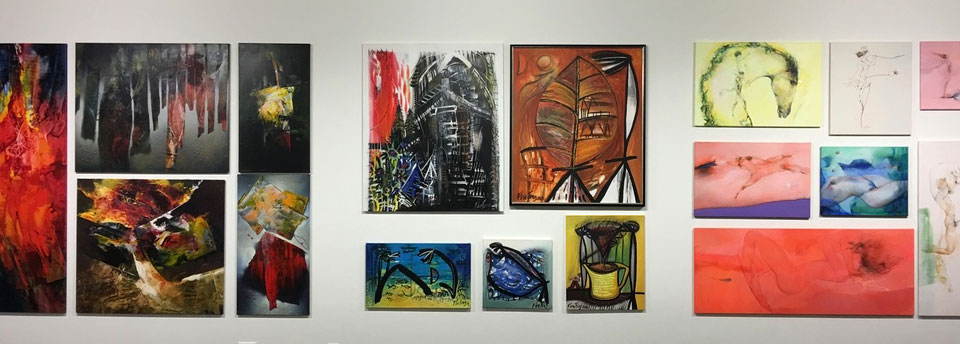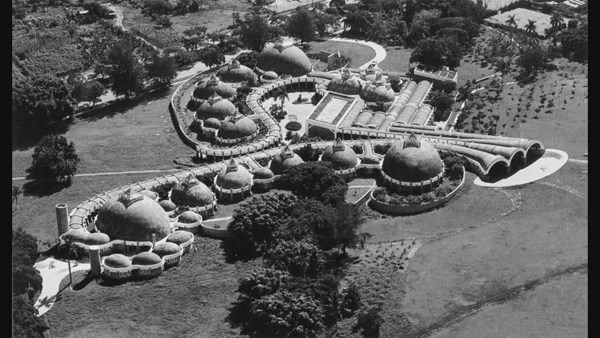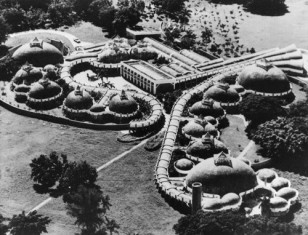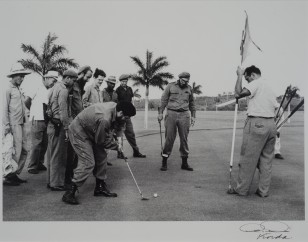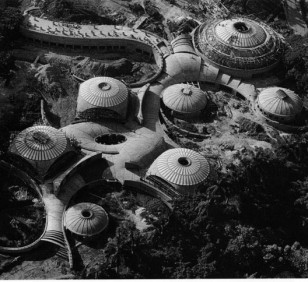– By Virginia Alberdi Benítez –
In 1981 an exhibition held at the International Center of Art in Havana became a reference point in the evolution of visual language in Cuba. Entitled as Volume I, a group of painters1 gathered works of dissimilar aesthetics showing an apparently paradoxical attitude to appropriate the tendencies of the time in the legitimating art centers in Europe and the United States and from them to inquire on the identities of cultures of the so-called Third World.
Ten years later, several of the internationally recognized painters of that event moved to other countries to live and work there. They were not the only ones; other creators of successive promotions have settled abroad during the 90s and the early years of the 21st Century. On the one hand, the worsening of the Cuban economy after the fall of the Soviet Union and the Socialist Countries of Eastern Europe, and the resurgence of US hostility had a very negative effect on the quality of life of the Cubans, and on the other hand, the emerging positioning of Cuban art in the market, influenced them to consider migration as a possible alternative. The list of artists trained in art schools, both in Cubanacan and the provincial art schools, living and working in different countries would be very long, therefore and to not make a cumbersome selection, I will only take into account three of the most successful and internationally recognized artists in the artistic world.
However, we must not be absolute about the terms of before and after that story. There were some exhibitions before Volume I, such as those held in Cienfuegos in 1979 (Pintura fresca, Art Gallery in 54th Street, organized by Leandro Soto), and in Havana in the early months of 1981 (Sano y sabroso, in 23 y 12 Art Center), and there was also the impact of the educational work of the Art Schools, particularly Cubanacan Art School throughout the 60s and 70s.
A teaching practice that combined the most rigorous training on technical tools and the encouragement for the free creative thinking was exercised first in the National School of Arty (ENA) and later in the Higher Institute of Art (ISA), founded on the same place in 1976. Most of the teachers –especially the most remembered- were those who promoted attitudes of renewal and nonconformity in the students. If one of the leaders of Volume I, Ricardo Brey, which we will discuss later, argues that “my style is to think” it is because he lived that experience from his academic initiation.
We must also say that living in other countries did not involve a break with the origins or the emotional order or professional agenda for several of the members of Volume I and other artists who came later. Many of them come and go back, exhibit their work in Havana and other places of Cuba, are included in museums and represent the Cuban art wherever they are.
Obviously, hierarchies are important for social recognition. The most successful of the group of Volume I is Tomás Sánchez. In 2013, when Sothesby´s auctioned the collection of the Mexican tycoon Lorenzo Zambrano, president of the Transnational corporation Cemex, Sanchez´s painting Mediador y laguna escondida en el bosque was acquired at $653,000, over works by the masters of the Cuban vanguard of the first half of the Twentieth Century, Wilfredo Lam ($401,000) and Amelia Pelaez ($341,000).
Tomás lives in Costa Rica in a natural environment, where he paints and photographs, but spends time in Cuba and the United States. Originally from a rural area, he was born in a sugar cane producing community in the central region of the island, he belongs to the first generation of artists trained in Cubanacan.
While initially to talk about his wish of formally studying painting was not liked by his father, who, according to the conviction of a countryman of his time, wanted him to have a trade that would allow living for him, he received support when moving to Havana at 6 and then he began frequenting libraries, museums and galleries, and registered at the Academy of San Alejandro.
It is known that at that time, the mid-60s, the Academy was not exactly a benefitted place of the vanguard, so Tomás made the leap to the National School of Arts (ENA). The teachers he had there are examples of the combination of rigor and freedom in training: Felix Beltran, Pedro Alpizar and Adigio Benitez in technical subjects and Sara Figueroa, Georgina Gainza, and Sergio Benvenuto in the theoretical ones. He indirectly received orientation by Servando Cabrera Moreno. But the main mentor of those years was Antonia Eiriz, Ñica, as his intimates called her, and she was starting to become a myth of Cuban art. Her artistic discourse, inserted in the most heartbreaking aspect of the new figuration, greatly impressed the young artist, to the point that his appearance on the stage of public knowledge was marked by compositions of clear expressionist affiliation.
In his repertoire of images landscapes are the most frequent. But he also has two other main subject areas, Crucifixions and Garbage collectors. All his work show visible philosophical, mystical and environmental implications.
If in the Cuban landscape tradition, even in which stands out for its technical quality, a bucolic vision had previously prevailed, in Tomas´s work there is a break of that view. In fact, he said: “I never say I’m going to paint a Cuban landscape.” He is not interested in slavishly reproduce what the eye sees, but what the retina feels, and there he radically differs from the hyper-realistic and photorealistic artists. Each work, in its intrinsic approach defies the realistic conventions in another direction. The painter is not limited to recreate nature but insists on questioning it; in advancing through it into himself, in an authentic and touching act of self-revelation.
Three times could illustrate the path of Ricardo Brey, a Havana man that has lived in Belgium for more than two decades: his selection to be part of the Documenta in Kassel in 1992, which made him visible for the international criticism; the personal exhibition Universe, which was exhibited for long months in 2007 in the Stedelik Museum voor Actuele Kunst (SMAK), Ghent, formed by thousand drawings, and exhibition that he brought to the National Museum of Fine Arts in Havana in 2014, which marked his return to Cuba.
With this exhibition he did not come to recover the past time or to show how much of his work has been denied by today, but to reveal the concerns that have led him to be a representative example of one of the most incisive trends of Western art, one that runs on the conflictive encounter between inherited rationality and renewal of myths.
Recently he stated in an interview: “What do you take from your home country? I did not bring homesickness, but I have a long antenna. In my work, now that I returned after twenty years, I say to myself: ‘! I was inventing a reality that was working here! ´ And my work has undergone an evolution because, although I have had a relative commercial success that has allowed me total creative independence, my style is to think. I have no style of painting. I have no style sculpture. My style is to think. I think, and while it continues to work and not become petrified in an academic thing, I will be an artist like I dream to be in these moments. This is what allows me to have that liquid, plasma condition, in my way of working. And that to organically react to sensitivities that exist in the environment. ”
Impelled by Volume I, Brey favored long before drawing in an educational environment where that subject was the support for the development of artistic skills. But also his training was influenced by a climate where everything was subjected to critical evaluation; philosophy, sociology, aesthetics, politics, utopias, the relationship with the market.
Another artist of the Volume I generation, with a thriving presence in international circuits, especially from the United States, where he lives, is José Bedia. In the 70s he studied successively at the Academy of San Alejandro and the Higher Institute of Art (ISA), where he was part of the first graduated in the specialty of painting at university level.
A professor of History of Art, Antonio Alejo, led him to study pre-Columbian cultures of Latin America and the Caribbean and to know the realities of native peoples in the Western Hemisphere. That inquiry would transform the vision of the then young artist, to the point that both his painting and its facilities have been characterized from the 80s to today by an anthropological imprint.
This view is confirmed by an eye-opening experience. Bedia in February 1985 obtained a scholarship, thanks to the good offices of renowned Uruguayan artist Luis Camnitzer in Old Westbury College, part of the State University of New York. He visited museums, became interested in the works of Keith Haring and Jean-Michel Basquiat and met the poet of the Cherokee Nation Jimi Durham, who facilitated a trip to South Dakota to come into contact with the Sioux Community in the Rosebud reservation.
TheBediathatpresentedin Havanatwo samplestitledAmericanChronicles in 1982questioningthe imposition ofwesternmodels to theNative American peoplesfromthe arrival of Columbusto these lands, becameaBediamuchmore committed toworld ancestral views.
You can see his paintings in the National Museum of Fine Arts in Havana as well as in institutions in Los Angeles, New York, Boston, Miami, Aachen, Berlin, Tel Aviv and Mexico. The cost of his works on the market have been increasing since the late 90s until the end of the first decade of the present century.
The way he has managed his insertion in the media of art legitimization –museums, art galleries and collections of the industrialized countries- deserved the following reflection of Cuban critic Orlando Hernandez:
“Every time Bedia moves to his works all that rich body of knowledge and ‘traditional’ cultural and aesthetic experiences he is involuntarily cooperating with the artificial reactivation of Western art, with its symbolic revival and making its weakness less noticeable regarding the vitality and coherence of these non-Western aesthetic practices from which his work has departed. Either way, what allows Bedia to retain his positive and optimistic essence despite these conflicts and dilemmas, is the confidence that sometime we will stop being the Others to be ourselves again. Not to become the new occupants of the Center but to recover at least the place that corresponds us place within the infinite variety of world cultures “.

